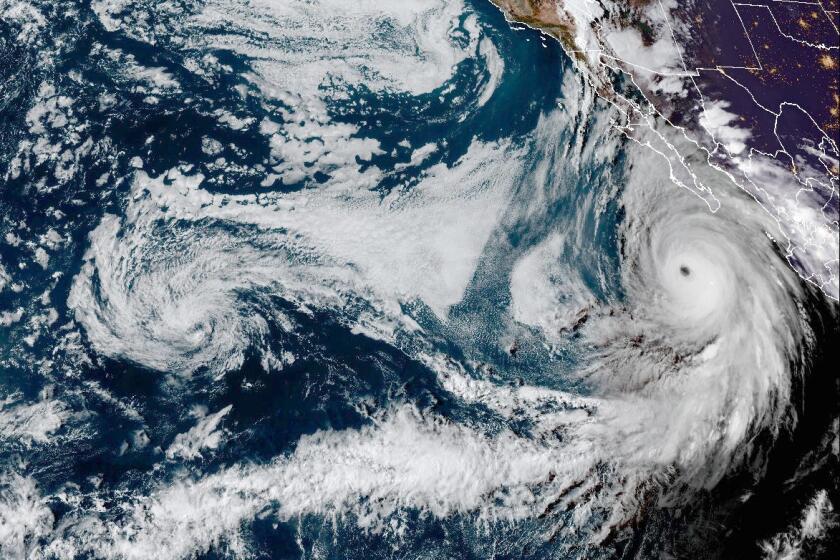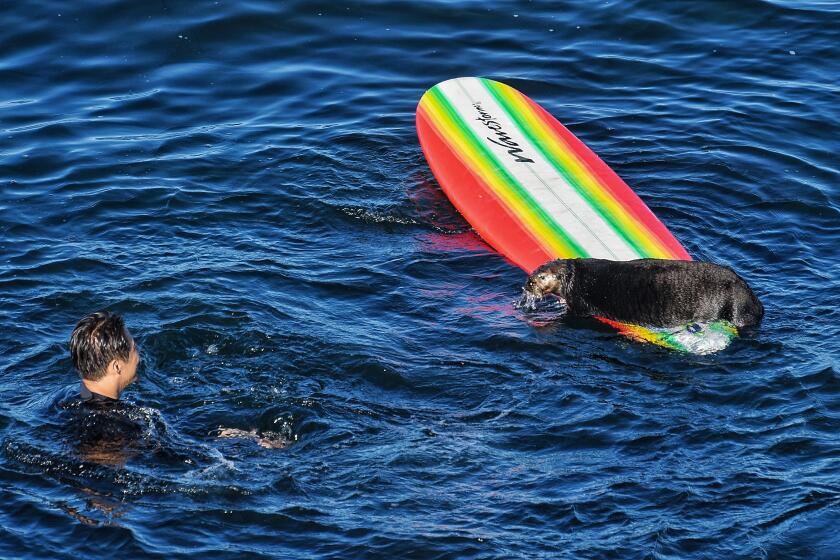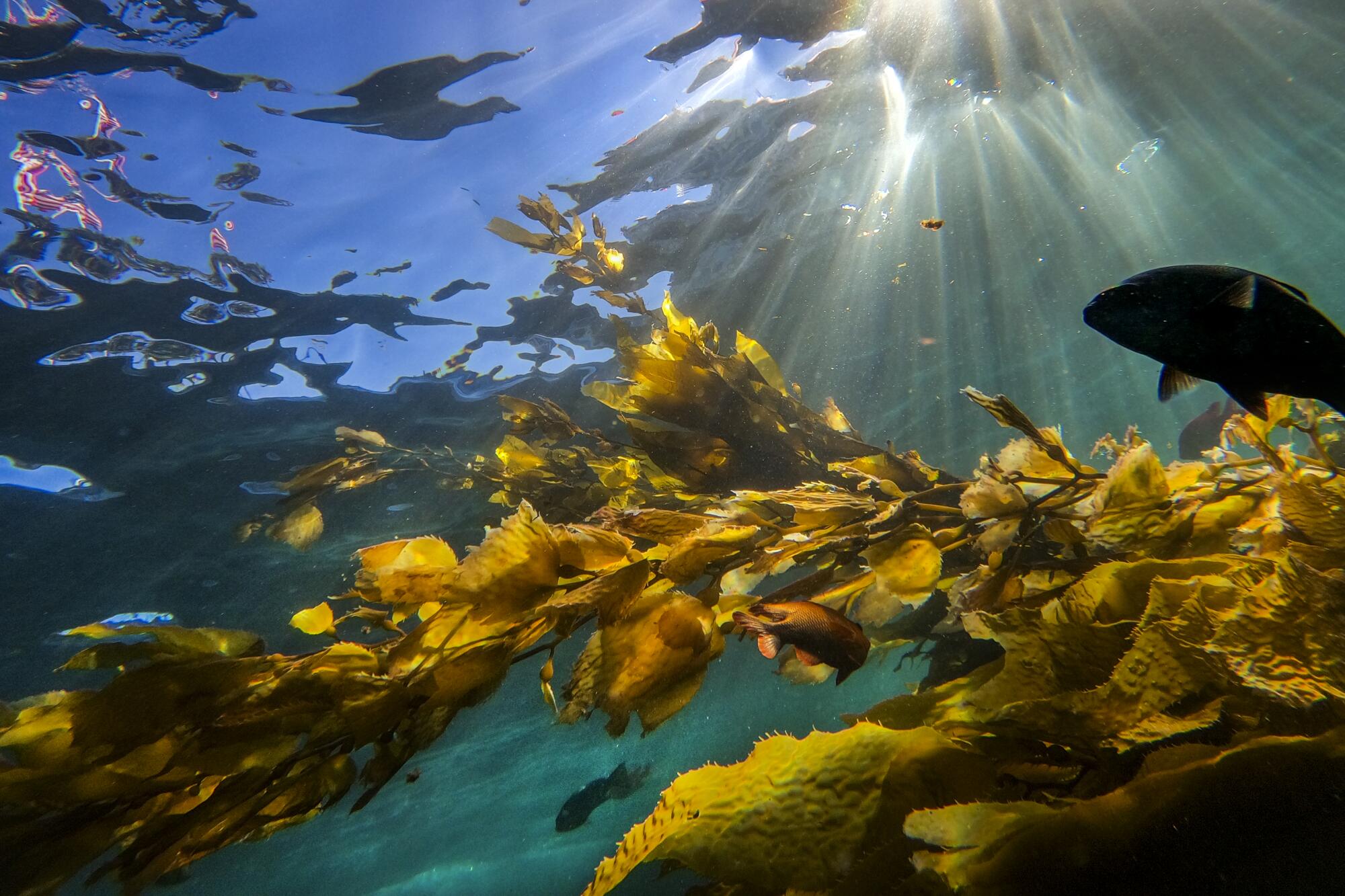
- Share via
Scientists are pretty good at recognizing marine heat waves: A global network of thousands of oceanic buoys and orbiting satellites allow them to see, in real time, ocean surface temperatures, changing currents and storm systems as they develop, move or stall from the Antarctic to the North Pole.
What’s harder to see is what’s happening to the marine ecosystems below — to the fish, invertebrates, plants and mammals.
“There’s sort of a disconnect between temperature and how something like temperature impacts species distribution patterns or how fisheries are operating or how protected species might be responding,” said Jarrod Santora, a fisheries biologist with the National Oceanic and Atmospheric Administration. “There’s a big jump between what we identify as a temperature anomaly and process in the ocean.”
Aggressive and impactful reporting on climate change, the environment, health and science.
Some animals may move down the water column to darker, colder waters. Others may move north — or south — depending upon where the cooler waters are. Many may flourish; others will perish.
And some may not be affected at all, said Santora.
“We’re just looking at temperature anomalies that focus on the skin of the ocean; we don’t know what’s happening inside,” he said.
That’s why Heather Welch, a marine spatial ecologist at UC Santa Cruz, and other researchers have created statistical models designed to predict where animals will go when things heat up.
“So one of the tricky things with heat wave impacts is you have to be lucky and actually have direct observations during the events,” she said. Such direct observations are often made via GPS tags on animals, or observations made from a research vessel that happens to be in the right place at the right time.

But with a model, you can use data collected not just during a heat wave, but at other times, too, and “extrapolate to see what would have happened during heat waves, or what did happen,” she said.
Earlier this month, she and a team of researchers published the results of a model that they used to predict the movements of 14 marine predators — a selection of mammals, birds and fish — in the North Pacific during the heatwaves of 2014, 2015, 2019 and 2020.
What they found was a “wide diversity of responses across heat waves,” she said.
For instance, during the heat waves of 2014 and 2015, bluefin and albacore tuna moved northwest. In 2019 and 2020, however, they moved southeast.
The researchers also found that different species responded ... well, differently.
“So if you look at a blue whale versus an albatross, they’re going to do different things,” she said, noting that such an observation hadn’t really been seen before — because most studies of marine heat waves focused on one animal in one heat wave.
Off the California coast sits a marine heat wave that has persisted since 2014. Scientists aren’t sure whether it’s now permanent, or a decades-long blip on the map.
It’s a point that Alexa Fredstone, an assistant professor of ocean sciences at UC Santa Cruz, echoed.
“We have a number of stories that individually make sense about how particular communities were affected,” she said. “But every story is unique and the most common thing that we see actually is when there has been a marine heat wave, we don’t really see any coherent response in the ecosystem.”
She said heat waves have had clearly detrimental impacts on shallow water ecosystems, such as kelp forests and coral reefs. But once you get farther down the water column, things get a little murkier.
She and a team of ocean and data scientists from across North America and Europe looked at the effects of marine heat waves on fish between 1993 and 2019. They found no clear effect — nothing beyond what you’d expect with natural variability.
“What’s surprising about this is that studies have shown that, over decades, fish are shifting towards the poles on average” as ocean temperatures climb from global warming, she said. “So we know that there’s a long-term climate signal. Maybe that’s just easier to detect statistically than the short term effect of a heat wave?”
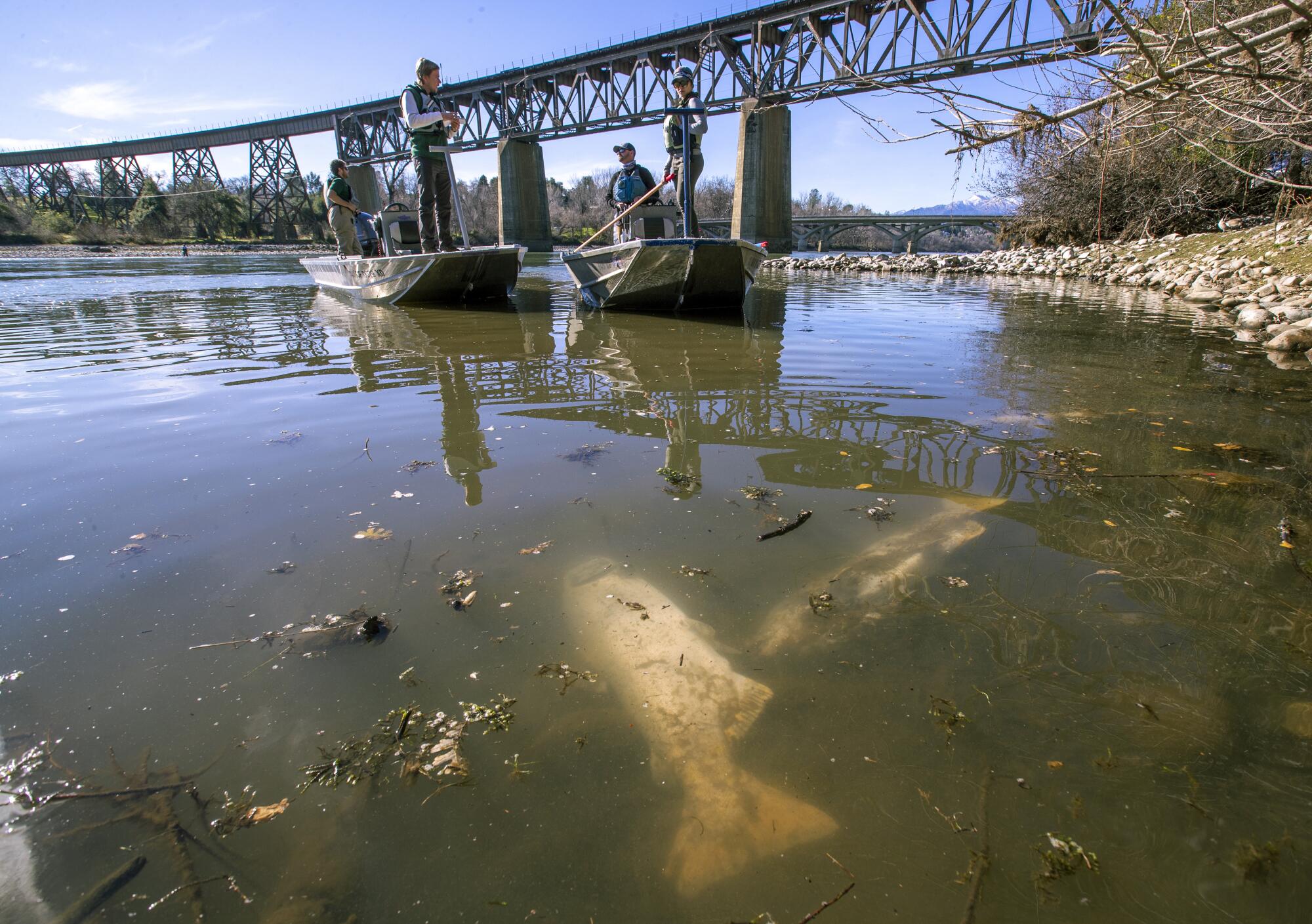
For fish like salmon, which require both marine and freshwater environments, the situation is slightly different — and the combination of heat waves in the North Pacific on top of a warming planet, is a boon to some species, and a disaster to others, said Nate Mantua, a fish biologist with NOAA.
He said warmer temperatures in places like the Gulf of Alaska or along the Pacific Coast, cut “off the food supply right at the base ... leading into a longer food chain and just kind of less nutritious food,” for salmon.
But if “you get far enough north,” warming may actually be benefiting salmon like the Bering Sea and Bristol Bay sockeye salmon, he said. In the last 10 years, these fish had “the biggest run ... the biggest harvest ever. Fifty-million fish harvested.”
He said that Russia’s Pacific salmon fishery this year also “has never been higher. It’s off the charts, but it’s almost entirely due to pink salmon from Russia and the stock populations in Bristol Bay. Everywhere else things are not good.”
Farther north than that? “That’s an interesting wrinkle,” Mantua said. “The salmon there have been doing extremely poorly the last 20 years.”
An ornery, board-jacking sea otter is terrorizing surfers off the coast of Santa Cruz. An effort is underway to capture the creature.
He said that was probably because of a combination of problems in the marine food web in the northern Bering Sea, as well as in their freshwater habitat.
“They have a really long migration through the interior of Alaska and it can get very warm there in the summer,” he said. “Twenty-four hours a day of light and a really big, broad, muddy river that soaks up a lot of sunshine.”
It’s for species such as this — the ones that need protecting — that Welch, who is also a researcher with NOAA, hopes her and others’ ecological forecasting models will help.
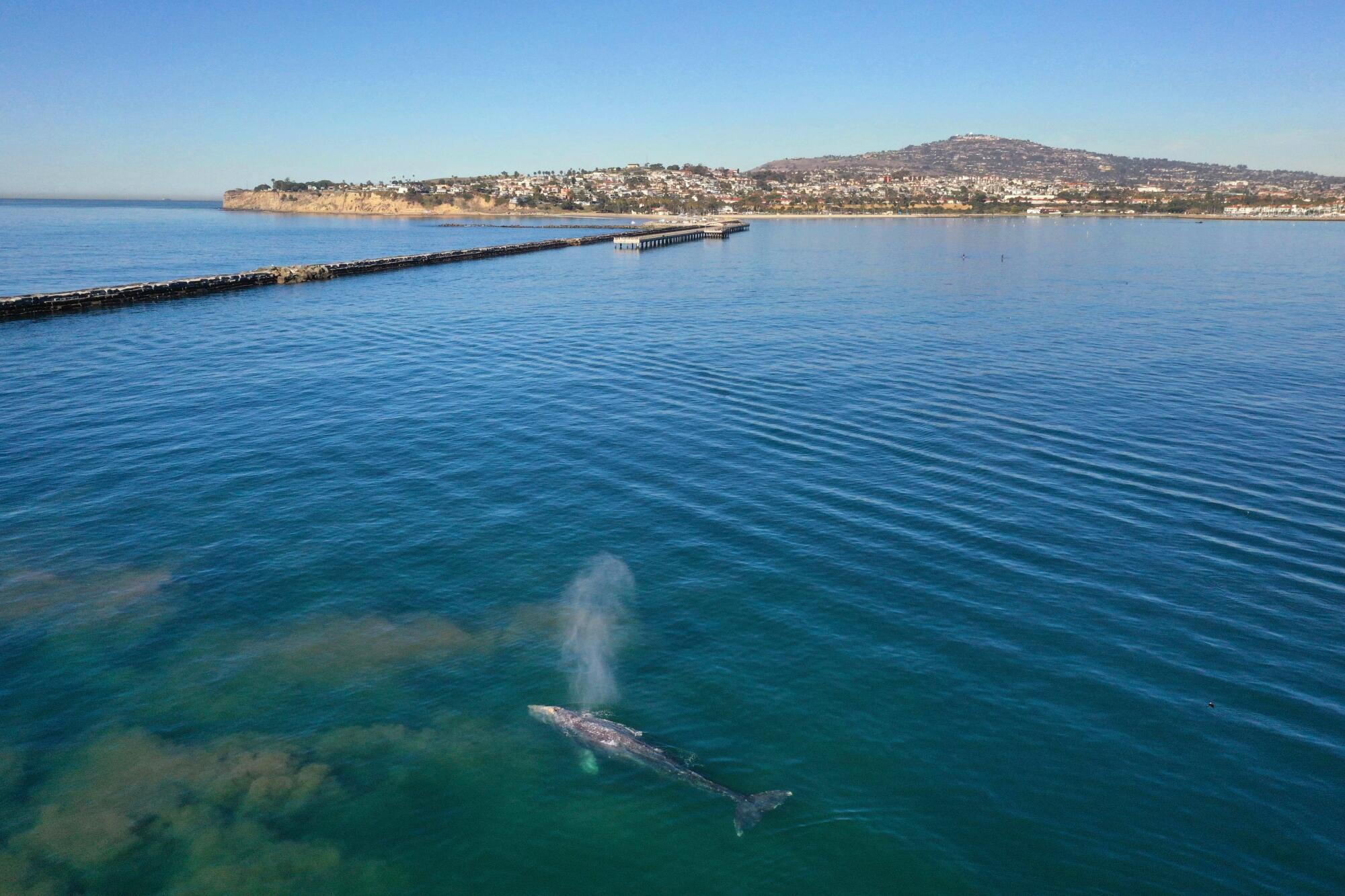
She said that knowing which waters blue whales are moving into, for instance, could help in terms of protection; if they move north from Mexican waters into waters off California, ships may have to keep lookout to avoid strikes, and certain fishing gear could be removed until they’ve passed through.
Fortunately, there are areas that appear more resilient to heat waves than others.
Ryan Walter, an oceanographer at Cal Poly San Luis Obispo, said areas with strong upwelling — like the cool strip along California’s coastline — appear to be less affected by heat waves than other areas in the ocean, potentially providing a cool haven for animals looking to avoid heat.
“It may be that these little pockets along the coastline, where we have this upwelling ... may be a spot where marine animals can seek refuge from warmer waters elsewhere,” he said.
“I think it’s exciting to be sharing some potentially optimistic news about the oceans,” Fredstone said of her and other researchers’ findings. “We’re all very concerned about these places that seem to be really vulnerable, like coral reefs. It was exciting to potentially have a discovery that some other ecosystems that we also care about, that are also really important to human culture and economy and well-being, may be a little more resilient.”
But, she said, we also have to remember that studies like hers were “done in oceans that are colder” than what we’re seeing now, and which didn’t have many recorded mega heat waves — like the 2014-16 blob that gripped the North Pacific, causing algae blooms and massive die-offs of birds, fish and mammals.
“So whether this pattern will hold as extreme events get more extreme, well, I think it’s too early to say,” she said.

